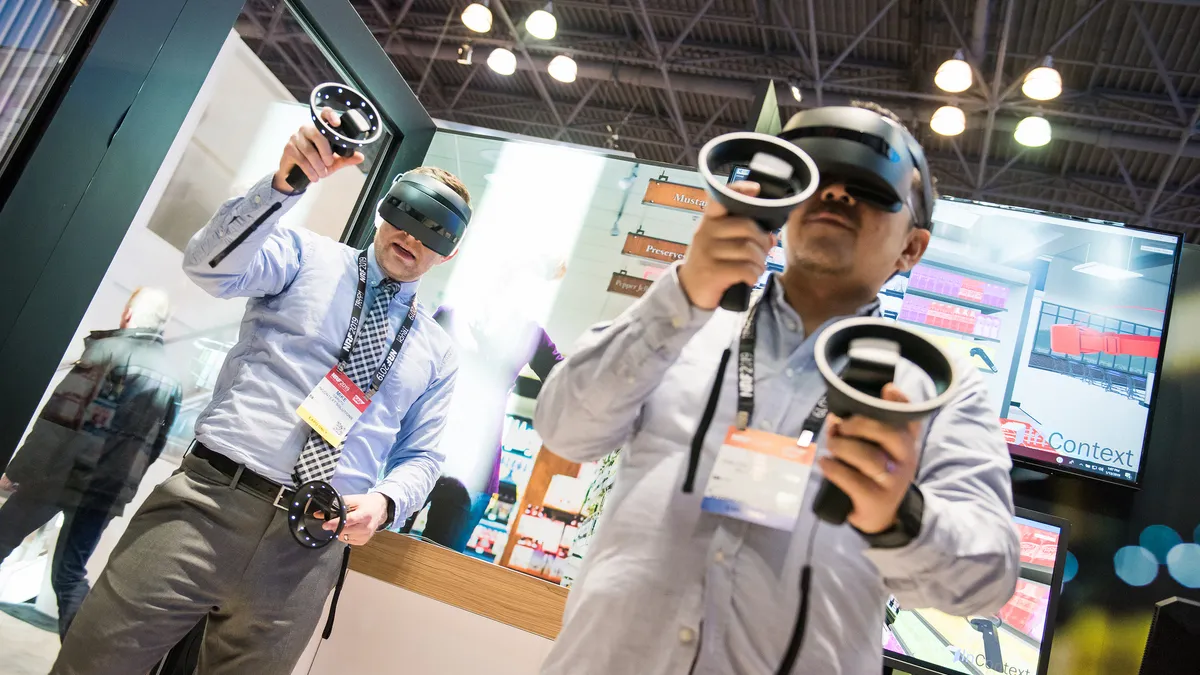The growing importance of the supply chain in retail operations was a strong undercurrent at the National Retail Federation's "Retail's Big Show" in New York City.
NRF itself knows it, hosting its first ever Supply Chain Workshop concurrent with the Big Show this year. The show's keynote speaker Lowe's CEO Marvin Ellison knows it — he's been preaching supply chain excellence as a key part of Lowe's comeback since his first day on the job back in July. But based on panel discussions and conversations on the expo floor, not all players have realized it yet.
Retail supply chain experts said the sooner retailers embrace the supply chain as a fundamental part of their customer satisfaction, the sooner they can leverage emerging tools and technologies to better serve shoppers and boost profitability. These takeaways demonstrate how modern retailers can leverage their supply chains to either delight or disappoint customers.
Warehouse tools move in-store
Twas the season of BOSS, BOPIS and any other fulfillment strategies that can be made into acronyms in peak season 2018. In the dim light of January, retailers are doing the math on how they made out.
According to Scott Fenwick, director of product strategy at Manhattan Associates, some are suffering from a bit of sticker shock. Some are pulling back alternative fulfillment options, while others are trying to change the equations on the back end to balance labor and inventory for better profitability.
"What we’ve found is that if a fulfillment objective fails, it's for one of two reasons: They didn’t plan properly and get the right products in place to make it a positive experience, or they didn't run the cost models well to understand what it is really going to cost to execute. Sometimes it's just not profitable," said Fenwick.
What makes the difference is data and planning, he said. "If they’re not putting in the right effective tools, then the customer is not going to have a good experience when they show up to pick up that merchandise."
A starting point is good visibility of the inventory in the network, followed by optimizing labor in the store. For some retailers, that means moving warehouse fulfillment tools like "pick-path optimization" into the store to gain efficiency and fulfill orders faster.
Fulfillment is a marketing opportunity
A growing sentiment among supply chain managers is that they work for the consumer. It's a new frame of mind for work that for decades was kept separate from seemingly related tasks like demand planning and even procurement. Amit Sharma, founder CEO of Narvar, a tech company focused on the "post-purchase experience," said some retailers are catching on.
"A select few progressive [retailers] understand that every touch point is a consumer touch point. A vast majority are still in the mindset that the supply chain is a cost center — not a consumer engagement opportunity or a marketing opportunity," Sharma said.
Sharma emphasized that since the consumer holds the retailer responsible for the entire transaction, every element of that delivery is part of its brand.
Robots are on the payroll
On a panel with Badger Technologies and Giant Food on the subject of robots in stores, the moderator asked Tim Rowland, CEO of Badger Technologies, which makes inventory robots in wide-use in Giant stores, about cost. He answered, "The robot's salary is... "
Consumers, so far, love seeing robots in store, but the value of robotics versus the benefit can be difficult to parse because robots don't directly replace humans in most operations. But giving them a wage simplifies the math much more so than Rowland's other question: "What is it worth to know that you’re out of stock as soon as you are?"
Another robotics company, Locus Robotics, which makes warehouse robots that help with picking in fulfillment warehouses, uses a robots-as-a-service model. Locus also talked about what the robots "make," this time in an hourly figure. It's a surprisingly simple way to think about robot ROI.
Clean data is a good place to start
The NRF Big Show floor is covered with tech vendors, and most will explain that the first challenge when working with a new retailer is essentially getting to zero.
Before using data to glean insights and drive efficiency, retailers need to be tracking meaningful indicators with reasonable fidelity. John Slangerup, CEO of American Global Logistics (AGL), told Supply Chain Dive many retailers are swimming in an ocean of data that may not be accurate or usable.
"There is a tsunami of data, but how much is meaningful information?" he said.
Jeanette Barlow, vice president of product management for Watson Supply Chain at IBM, told Supply Chain Dive that getting real, accurate data coming in is the first stage of her work with any client.
"Their homegrown solutions are outdated and just don’t have the sophistication to have the flexibility for all the models they need," said Barlow. Working with retailers to bring in better data is the first step before she can offer better visibility and then, optimization.






















